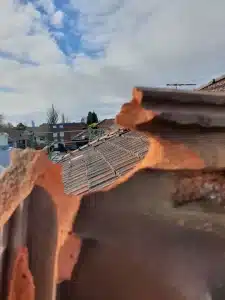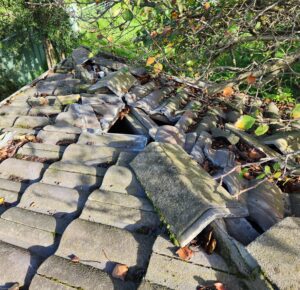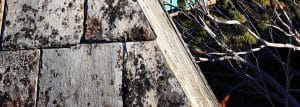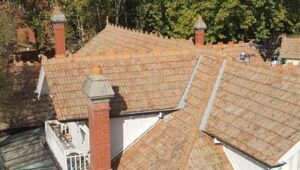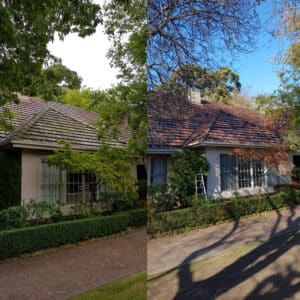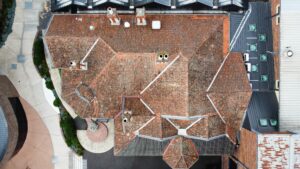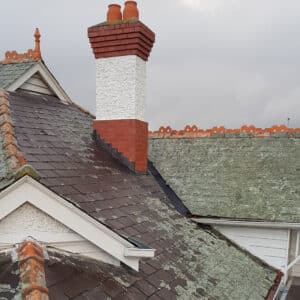When replacing your tiled roof, it’s important to consider some of the main types of roofing materials available.
Slate, terracotta, and concrete roof tiles are popular options that offer unique characteristics and benefits. Here are the key differences between these three types of roof tiles:
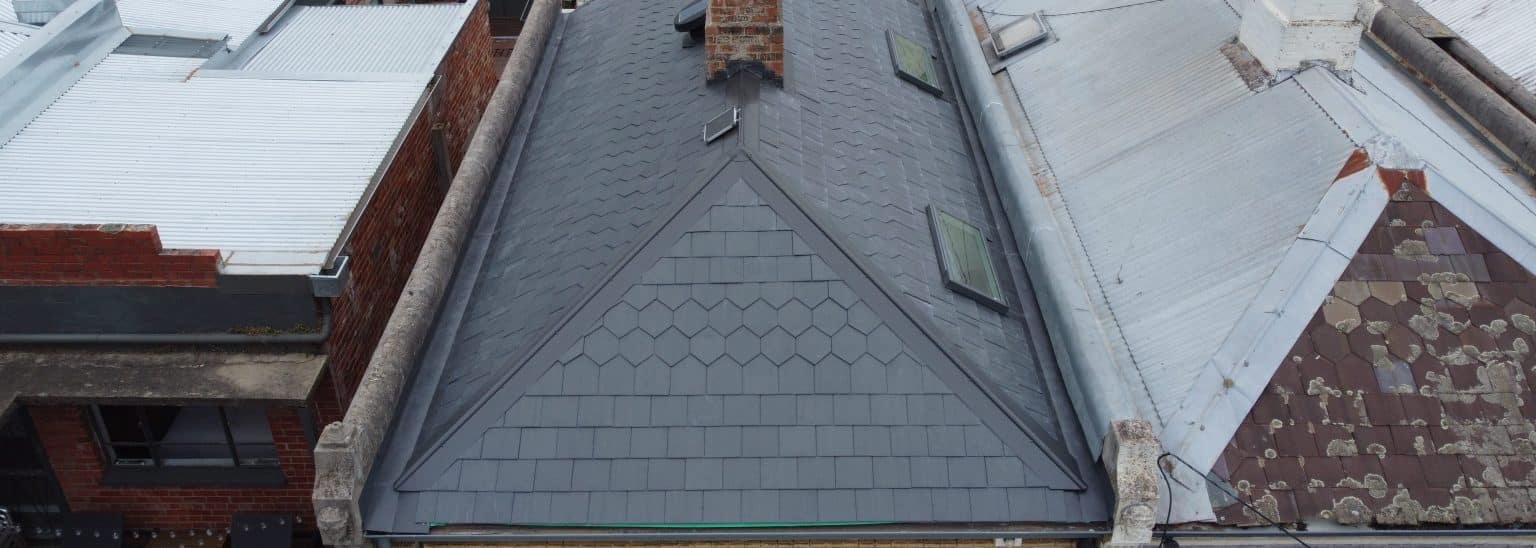
1. Slate Roof Tiles:
Slate roof tiles are made from natural stone, typically slate or shale. They are known for their durability, longevity, and elegant appearance. Here are some key features of slate roof tiles:
- Durability: Slate is one of the most durable roofing materials available, with at times (when good quality) a lifespan of 100 years or more. It is resistant to fire, rot, and pests.
- Aesthetics: Slate roof tiles offer a timeless and sophisticated look. They come in various colours, including gray, black, green, and purple, adding a touch of elegance to any home.
- Weight: Slate is a heavy material, so it requires a strong roof structure to support its weight. Reinforcements may be necessary during installation.
- Maintenance: Slate roofs require minimal maintenance. They are resistant to moss and algae growth and do not fade over time.
- Cost: Slate roof tiles are generally more expensive than other options due to their high-quality and longevity. However, their durability can offset the initial investment.
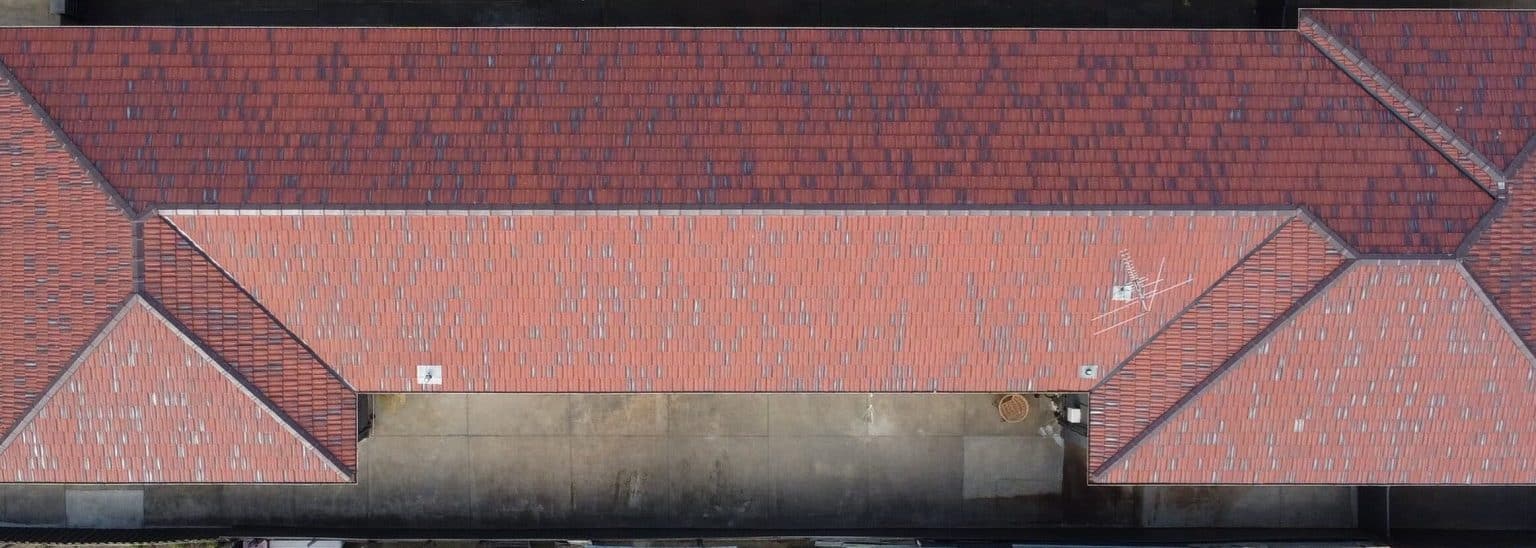
2. Terracotta Roof Tiles:
Terracotta roof tiles are made from fired clay and are known for their warm, earthy tones. They have been used for centuries and offer several advantages:
- Aesthetics: Terracotta roof tiles provide a rustic and Mediterranean look to homes. They come in various shapes and colors, including red, orange, and brown, adding character and charm.
- Durability: Terracotta tiles are durable and can last for 50 to 100 years. They are resistant to fire, rot, and insects.
- Insulation: Terracotta tiles have natural insulation properties, helping to regulate temperature and reduce energy consumption.
- Maintenance: Terracotta tiles require minimal maintenance. They are resistant to moss and algae growth and can withstand harsh weather conditions.
- Weight: Terracotta tiles are lighter than slate but still require a sturdy roof structure for support.
3. Concrete Roof Tiles:
Concrete roof tiles are made from a mixture of cement, sand, and water. They are a popular and cost-effective option for homeowners. Here are the key features of concrete roof tiles:
- Affordability: Concrete tiles are generally more affordable than slate or terracotta. They offer a cost-effective solution without compromising on durability.
- Versatility: Concrete tiles come in a wide range of colours, shapes, and textures, allowing homeowners to achieve various architectural styles.
- Durability: Concrete tiles are durable and can last for 30 to 50 years. They are resistant to fire, rot, and insects.
- Weight: Concrete tiles are heavier than terracotta but lighter than slate. They still require a solid roof structure for proper installation.
- Maintenance: Concrete tiles require minimal maintenance. They are resistant to moss and algae growth and can withstand harsh weather conditions.
When choosing between slate, terracotta, and concrete roof tiles, consider factors such as your budget, desired aesthetics, durability, and the structural capacity of your home. Consulting with a roofing professional can help you make an informed decision based on your specific needs and preferences.


